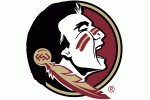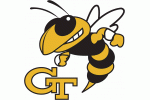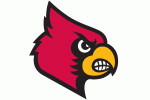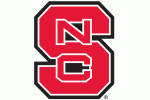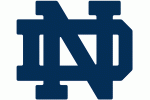John Infante aka @bylawblog delves into burgeoning conflict between the NCAA and NBA on the one year age limit or “one and done” rule. In recent months there has been a elevation of tension between the NCAA and NBA concerning the rule, mainly fueled by unhappiness on the college side with the effects of the rule. As it turns out, a little conflict between the two entities might not be a bad thing.
The fight started with President Mark Emmert’s comments about the NBA’s 19 year-old age limit that requires basketball players to spend a year doing something:
“I happen to dislike the one-and-done rule enormously and wish it didn’t exist. I think it forces young men to go to college that have little or no interest in going to college.”
NBA Commissioner David Stern had a rather pointed response:
“A college could always not have players who are one and done. They could do that. They could actually require the players to go to classes. Or they could get the players to agree that they stay in school, and ask for the scholarship money back if they didn’t fulfill their promise. There’s all kinds of things that, if a bunch of people got together and really wanted to do it, instead of talk about it.”
Let’s quickly get one thing out of the way: both men are correct. There are a group of athletes who, but for the age limit, would be in the NBA. They are in college because they decided that college basketball was the best alternative. And the NCAA, conferences, or schools could adopt any number of policies designed to fight the effects of the one-and-done rule. But neither really addresses the other. You still have athletes who would rather not be in college and it is still not the NBA’s problem.
This fight is unlikely to go away because conventional wisdom says each group needs the other. Operating a U23 developmental league on the scale of Division I would be impossible for the NBA on its own. And if the NBA removed the best players from college basketball, interest would drop some amount. Both of these facts are true, but both are also irrelevant.
The NBA does not need to operate a developmental league at the same level of the NCAA, with full rosters of NBA-age players, additional facilities, and another administrative staff. The NBA simply needs to operate cheaper youth teams (at least two, one for high school freshmen and sophomores and one for juniors and seniors) and expand rosters using development slots at below the current minimum salary to make teams large enough to support a reserve league. Youth and reserve teams would leverage existing infrastructure, drastically cutting development expenses. Broadcast partners and sponsors, especially shoe companies, might pay for the entire project.
There’s also not great evidence that college athletics needs a steady supply of would be pros to be popular. College baseball has reached record levels of revenue and popularity at the same time MLB clubs were throwing so much money at kids to not go to school that it became the central issue in the new collective bargaining agreement. The same goes for college soccer, which continues to grow despite MLS shifting money to its own developmental system.
Infante goes onto point out that the NCAA is not really the best place for players to prepare for the NBA. Why? Because the NCAA restricts that development through various rules.
Athletes are limited to a maximum of 20 hours per week of training. But during the season, that 20 hours has to include games, each of which cuts into training by 3 hours.
During the offseason, athletes are limited to just eight hours of training. Skill instruction is further limited to just two hours of those eight. For long portions of the year, no training can be required at all.
Athletes are generally prohibited from even requesting additional skill instruction because of the way the NCAA has defined voluntary activities.
Athletes are required to pursue an academic career parallel to their athletic one, which takes away from the time and energy they can devote to improving.
Staffing and recruiting limits make evaluation and selection of athletes with the most potential to be pros more difficult.
The NCAA operates (or allows to operate) national championships that become the primary focus of a coach’s job, rather than developing future professional athletes.
The coaches’ primary role is to win games with player development serving that goal first. That doesn’t mean college coaches ignore developing their players for a future in the NBA but players get utilized first and foremost in whatever way helps the team win an NCAA title. Sometimes that means a player will not get to showcase the type of skills that make them enticing to the NBA. In the end, it probably all comes out in the wash but the overarching point remains, NCAA rules curtail the amount of time and focus a player might put into his personal development. Oddly enough, even with that factored in, the players themselves still consider it the best option until they can reach the NBA. Much of that has to do with familiarity and playing against players of similar skill level, age, etc. If a player were to go to Europe the level of competition is different and the results for players taking that route have been mixed. Not so with players in college who continue to do well on the next level even if they end up being there for one year.
The problem with the age limit on the college side is (1) the NCAA puts a priority on education and the age limit sends players to school who have no intention of finishing and (2) it creates a number of practicality issues for coaches in running their programs. The “not knowing” makes life difficult for coaches in terms of planning and recruiting. Roy Williams’ answer to this has been to operate on a two year recruiting plan which acknowledges the cupboard is going to empty every so often which enables him to land an elite class on the heels of one that is just solid. His goal has been to create teams with 1-2 year players complimented by 3-4 year types. It also means having down season like 2006(on paper anyway), 2010 and now potentially 2013. At Kentucky, John Calipari’s answer has been the recruit ‘em all and let NBA attrition sort it out. In both cases there are elements of instability introduced by not knowing how long a player will be on campus.The need for certainty is what drove coaches to demand a short timetable on early entries in the NBA Draft and it now drives the need for the age limit to be changed.
Unfortunately, as much as these two entities might need each other, a solution that everyone will be happy with is not easily recognized. A straight two year age limit would offer the most stability since players would commit and coaches could make plans based on two year windows. Something akin to the baseball rule sounds good but reintroduces uncertainty into recruiting since players could commit then go to the NBA leaving coaches holding the bag and missing a player they thought was coming. Reverting to the old system of no age limit would be a nightmare in recruiting and players leaving early. The NBA has no interest in that since it means losing that guaranteed one year of evaluation that is currently available.
In the end I think the ultimate solution may be to do what is best for the players themselves. As a matter of personal viewpoint I always think it is better to create more freedom and choice for individuals concerning the key decisions of their life than fewer. An 18-year old basketball player should be able to choose the NBA if he wants or college for two years or going to Europe. Unlike the NFL, basketball players can come out of high school and compete in the NBA whereas in football there is a concern about players having the necessary physical development. For those of us who love college basketball and generally disdain the NBA, it means watching someone we enjoy shafted as the “odd man out.” It is frustrating to be sure but Infante points out college basketball can still grow even without the elite players. It does means more parity, more instances where VCU and Butler show up in the Final Four and more times like now where we have no idea what the next season might hold.





